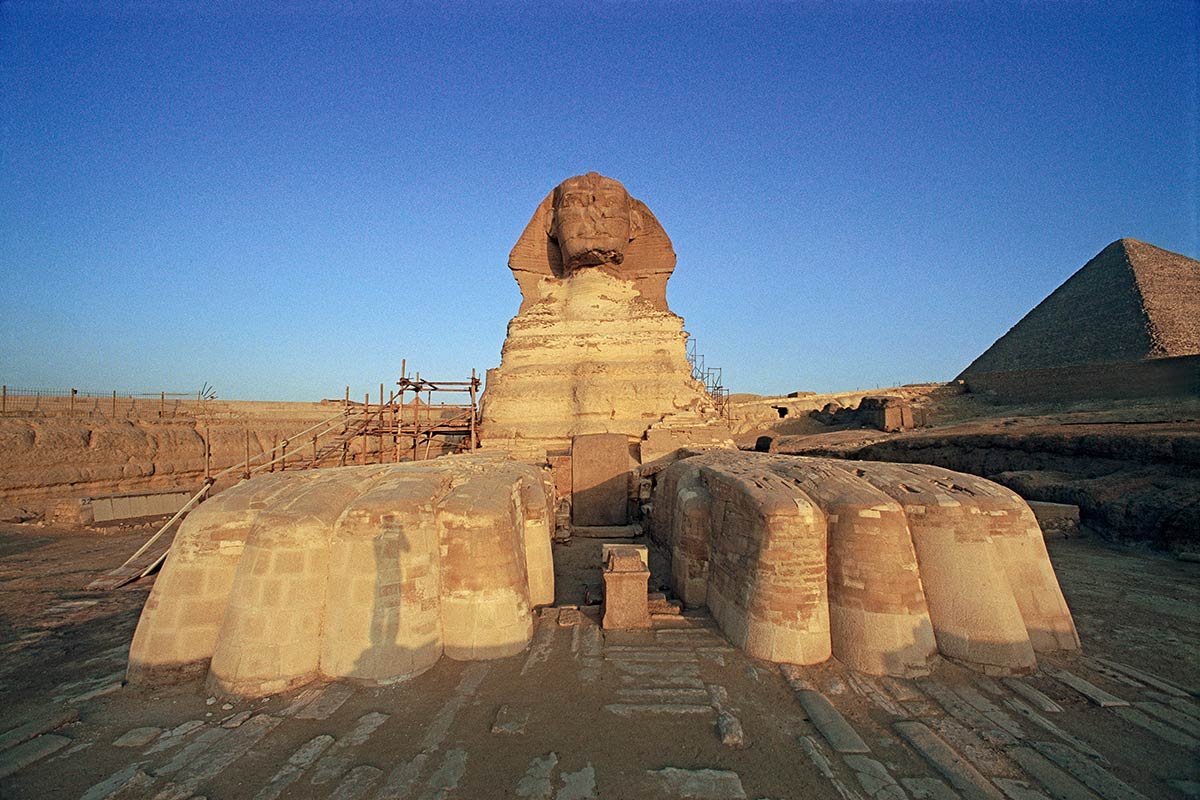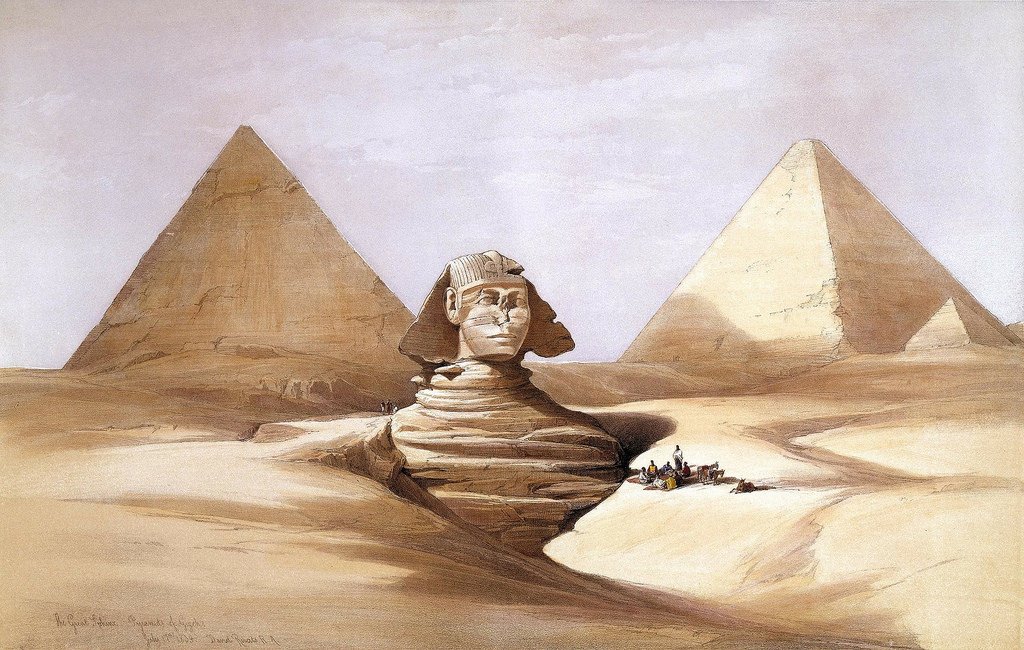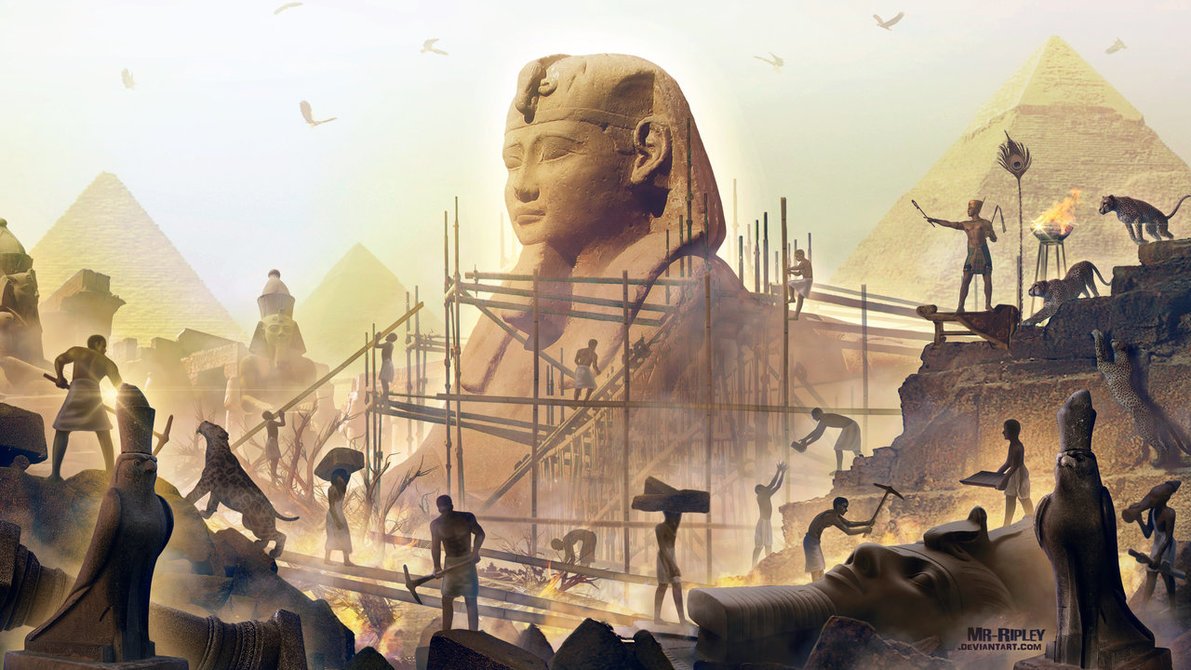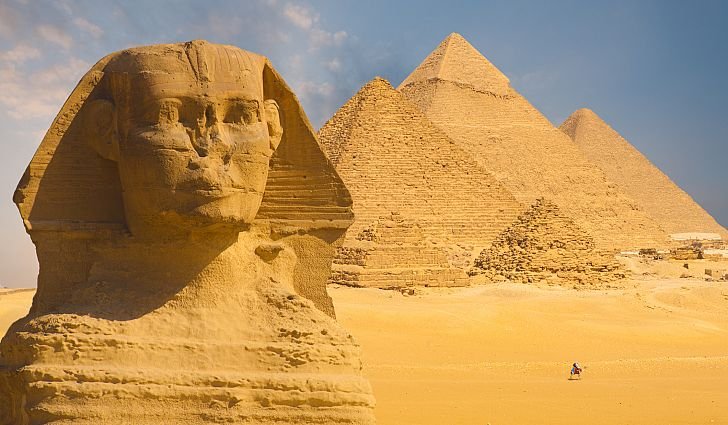We previously tackled about King Khufu, one of greatest Pharaohs of the Old Kingdom of Egypt. It was said that during in their dynasty the constructions of some of Egypt's greatest structures began.
The Great Sphinx is a testament to the grand scale of Ancient Egyptian culture and art. The monument which stands at 240 feet long and 66 feet tall, was carved out of a naturally-occurring stone. It stands as a guardian of the Pharaohs in the great necropolis.

What is a Sphinx?
A sphinx is a composite figure (a mythological creature composed of parts of different living creatures) that originated in Greek mythology. The Greek version, meaning “strangler”, had the head of a human female, the body of a lion, the wings of a bird, and the tail of a snake. The Greek sphinx was a monster that guarded the dead.
The Egyptian sphinx however had a lion’s body, but often had the head of a man or a ram (to represent the god Amon). Also a guardian of the dead, the sphinx came to be common in Egyptian monumental art, usually smaller and positioned in pairs outside tomb entrances.

The sphinx is also a symbolic representation of the close relationship between the sun god and the king. The Ramessid royal family considered the god Seth to be their royal ancestor. On an obelisk discovered off the coast of Alexandria pharaoh Sety I is represented as a sphinx. While some rulers chose to use their own head to represent themselves, Sety I used the head of the Seth-animal.
However the creature was depicted, its purpose was always to demonstrate a pharaoh’s strength and his close association to the god Ra.
Construction of the Great Sphinx
The head of the Great Sphinx was carved from the natural harder stone that was already in place. The body of the statue was formed from huge blocks of quarried sandstone that were moved into place. Originally, the great statue was probably faced with painted plaster.

Who Built the Great Sphinx
It is said that Pharaoh Khafre was the one responsible for the construction of the Sphinx. The most credible and solid proof is in the geology, architecture, and archaeology of the Sphinx and its related monuments.
When?
It has been a constant debate and speculation over the true age of the Sphinx. Here are some of the closest theories:
- Many believe the Sphinx was carved over 4,500 years ago by the same workers who constructed Khafre’s pyramid.
- There is evidence that the Sphinx was commissioned by Khufu.
Degradation of the Sphinx
It didn’t take long for erosion to begin affecting the Sphinx. The material from which it is carved is soft, and highly exposed to the wind and heat of the Egyptian desert, and even the annual flooding of the Nile. The Sphinx probably began eroding as soon as it was completed.
Ironically, it was the wind that probably also aided in the preservation of the Sphinx. The wind, constantly stirring up sand, eventually buried the monument, encasing it for most of its existence. In fact, it was King Thutmose, ruler from 1425 – 1417 B.C., who first began to try to clear away the sand in order to fulfill a prophecy (the Sphinx came to him in a dream, vowing to make him King if he unearthed the statue).

Many others had tried to completely exhume the Sphinx from her sandy grave through the millennia, including Napoleon in 1798. It was not until 1936, though, that Frenchman Emile Baraize succeeded in excavating it.
The Sphinx Today
The Sphinx exists today in a state of constant erosion. Its nose has been missing for nearly 600 years, and the rock is cracking and crumbling under the Cairo smog, sun, and wind. There are no real excavations taking place on the Sphinx today, only a huge preservation effort to save one of the last remaining symbols of Ancient Egypt.

Source(s)
Sphinx Project- AERA
The Great Sphinx of Giza, an Introduction - Tour Egypt
The Sphinx of Egypt - Sacred Sites
Ancient History - The Great Sphinx of Giza
Great Sphix of Giza - Wikipedia
